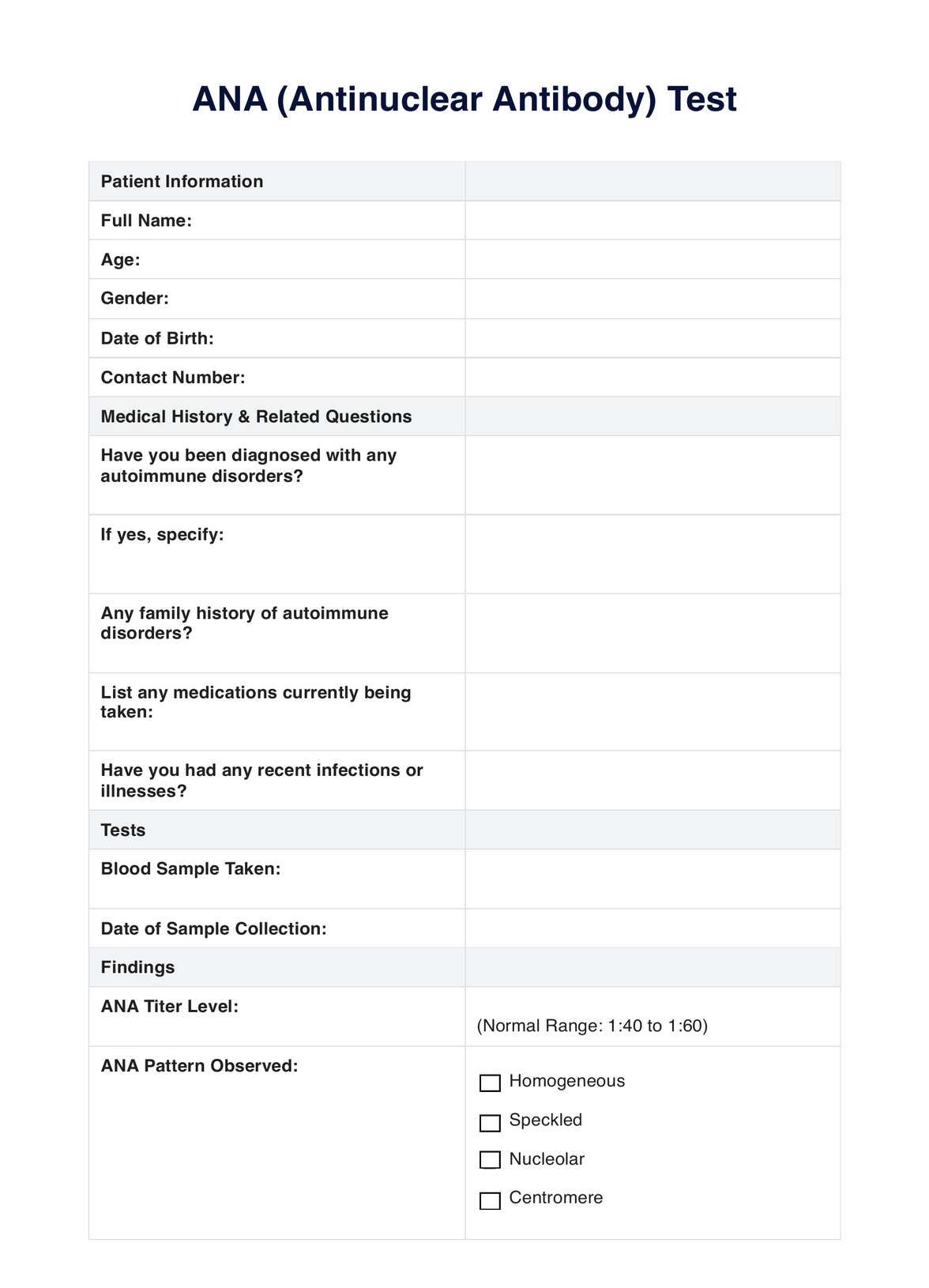A positive ANA test indicates the presence of antinuclear antibodies in the blood, which can be associated with autoimmune disorders. However, a positive result doesn't necessarily mean one has an autoimmune disease.

ANA
Discover the significance of the ANA Test with Carepatron's comprehensive guide. Get insights, examples, and a free PDF download for healthcare professionals.
Use Template
ANA Template
Commonly asked questions
The frequency of the ANA test depends on the patient's symptoms and the physician's recommendations. It's often used as an initial test and may be repeated if symptoms develop or change.
Yes, certain medications can induce a positive ANA result, including some blood pressure drugs, anti-seizure medicines, and tuberculosis drugs.
EHR and practice management software
Get started for free
*No credit card required
Free
$0/usd
Unlimited clients
Telehealth
1GB of storage
Client portal text
Automated billing and online payments











